Are you a Quiet Speculation member?
If not, now is a perfect time to join up! Our powerful tools, breaking-news analysis, and exclusive Discord channel will make sure you stay up to date and ahead of the curve.
We are within two weeks of the next big United States Modern Grand Prix in Pittsburgh and if you are anything like me, you have a lot of preparation to do. For me, the biggest challenge before a big event like this is picking the right deck, making sure it is tuned properly, and I have the reps with the deck. The first place I like to look for deck ideas is the last major event, which for us is Grand Prix Porto Alegre.
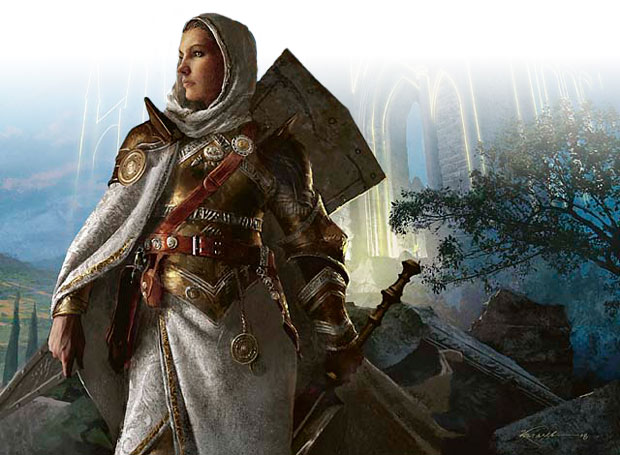
The Top 8 for GP Porto Alegre is very odd compared to where I would have expected the meta to go after the World Championship and Grand Prix Oklahoma City. Let us start with the winner’s deck:
[wp_ad_camp_1]
Naya Zoo
Naya Zoo, by Marcus Paulo de Jesus Frietas (Grand Prix Porto Alegre, 1st Place)
This deck relies less on Collected Company than the similar version that Paul Rietzel played at Grand Prix Charlotte to great success. In addition, two Blood Moons and a Magus of the Moon help to shut down decks like Amulet Bloom and steal free wins in a deck that already applies a lot of pressure. This is the quintessential beatdown deck that can interact with other aggressive decks like Affinity while still being able to fight on a more midrange axis if needed. It also has some of the most explosive starts in the format outside of Affinity, while still having interaction and the ability to fight against GBx decks by applying massive pressure early with catch-up cards like Collected Company. I really like how Marcus's Zoo list looks on paper, but I am not sold it is the deck to bring to Pittsburgh. That said, if you are weak to Blood Moon effects, this deck should definitely inform your sideboard decisions.
In addition, two Blood Moons and a Magus of the Moon help to shut down decks like Amulet Bloom and steal free wins in a deck that already applies a lot of pressure. This is the quintessential beatdown deck that can interact with other aggressive decks like Affinity while still being able to fight on a more midrange axis if needed. It also has some of the most explosive starts in the format outside of Affinity, while still having interaction and the ability to fight against GBx decks by applying massive pressure early with catch-up cards like Collected Company. I really like how Marcus's Zoo list looks on paper, but I am not sold it is the deck to bring to Pittsburgh. That said, if you are weak to Blood Moon effects, this deck should definitely inform your sideboard decisions.
Alternatively
Next from the finals was another Naya deck, this one focusing more heavily on burn spells with some creatures, a design popularized by Patrick Sullivan of StarCityGames. This version plays very similar to Burn, but gains Wild Nacatl as another potent early game threat. I am not a fan of this deck, but I have a personal bias against Burn. In a format where I feel there are very powerful proactive decks, I do not think Burn is a great choice. However, if the meta shifts towards some slower decks or decks that cannot handle early creatures and early pressure, this is an upgrade to the traditional Burn deck. The other thing I dislike about this deck is it looks exactly like it did a few months ago. It did not impress then and, with no changes now, it continues to be unimpressive.
Many Shades of Knight
Looking over the rest of the Top 8, there is an interesting four-color Knight of the Reliquary, Retreat to Coralhelm combo deck, a Hexproof deck, a Tron deck, Twin, and a Living End build. While Hexproof, Tron, Living End, and Twin have been staples of varying degrees in Modern history, I want to look at the four-color deck that is the big surprise deck from this Top 8.
Four-Color Knight, by Caio Amaral (Grand Prix Porto Alegre, 4th Place)
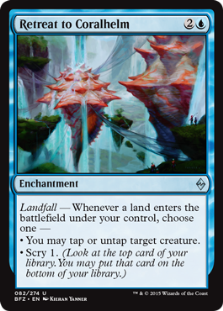 This deck combines the best of Naya Zoo while also adding blue for countermagic out of the sideboard and the Retreat to Coralhelm combo. I think this deck is very interesting and while numerous people have experimented with the Knight-Retreat combo, I think the numbers for this particular list are very impressive. Most of the combo versions of this deck try to force four of each piece into the main 60, losing the ability to play the pure aggressor role in matchups where the combo is too risky (such as GBx). I really like its early-game emphasis with mana acceleration into very powerful two and three-drops to quickly close out the game.
This deck combines the best of Naya Zoo while also adding blue for countermagic out of the sideboard and the Retreat to Coralhelm combo. I think this deck is very interesting and while numerous people have experimented with the Knight-Retreat combo, I think the numbers for this particular list are very impressive. Most of the combo versions of this deck try to force four of each piece into the main 60, losing the ability to play the pure aggressor role in matchups where the combo is too risky (such as GBx). I really like its early-game emphasis with mana acceleration into very powerful two and three-drops to quickly close out the game.
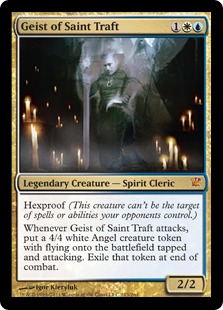 This deck also uses Geist of Saint Traft on turn two to put almost every deck on the back foot, leveraging cards like Lightning Bolt and Path to Exile to clear the way for the Geist’s glass-cannon offensive. The synergies within this deck are very impressive and while they are not quite as streamlined as the Naya Zoo list that took first, I feel this deck can transform into a midrange strategy more effectively than the other Zoo deck, which simply hopes blind aggression is good enough versus GBx and Grixis Control. This is one of the few decks I would heavily consider for Grand Prix Pittsburgh, but you should consider proxying out the deck and getting in reps before you start considering it seriously. This style of deck has some obvious lines, but Knight provides many intricate sequences and an inexperienced pilot will make mistakes.
This deck also uses Geist of Saint Traft on turn two to put almost every deck on the back foot, leveraging cards like Lightning Bolt and Path to Exile to clear the way for the Geist’s glass-cannon offensive. The synergies within this deck are very impressive and while they are not quite as streamlined as the Naya Zoo list that took first, I feel this deck can transform into a midrange strategy more effectively than the other Zoo deck, which simply hopes blind aggression is good enough versus GBx and Grixis Control. This is one of the few decks I would heavily consider for Grand Prix Pittsburgh, but you should consider proxying out the deck and getting in reps before you start considering it seriously. This style of deck has some obvious lines, but Knight provides many intricate sequences and an inexperienced pilot will make mistakes.
Old Standbys
Moving past Grand Prix Porto Alegre, let us look at which format pillars remain good choices you should consider moving into the Pittsburgh weekend. Both styles of GBx decks are still very good and while Jund continues to grow in popularity, Abzan continues to remain present and remind players about the strength of Lingering Souls in the format.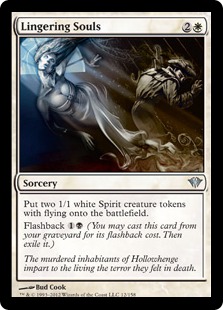 Having discussed the viability of both of these decks in Grand Prix Pittsburgh, I believe both will need a sideboard overhaul to crack the Top 8. The current Modern environment feels too hostile towards GBx and with the decline in Grixis decks, the GBx decks have lost a good matchup from the format's top-tier . Consider shelving those Liliana of the Veils and moving Tarmogoyf to different decks. I do not think either of these decks is in prime position to have a breakout performance without some serious sideboard and maindeck shakeups. Especially looking at the Top 8 from Porto Alegre, there are many hostile decks. If the meta looks similar to Porto Alegre, I expect GBx will not crack Top 8 as many of those decks are bad matchups and current builds have a very difficult time adjusting to the axis those decks want to fight on, especially Tron, Living End, and the Naya decks.
Having discussed the viability of both of these decks in Grand Prix Pittsburgh, I believe both will need a sideboard overhaul to crack the Top 8. The current Modern environment feels too hostile towards GBx and with the decline in Grixis decks, the GBx decks have lost a good matchup from the format's top-tier . Consider shelving those Liliana of the Veils and moving Tarmogoyf to different decks. I do not think either of these decks is in prime position to have a breakout performance without some serious sideboard and maindeck shakeups. Especially looking at the Top 8 from Porto Alegre, there are many hostile decks. If the meta looks similar to Porto Alegre, I expect GBx will not crack Top 8 as many of those decks are bad matchups and current builds have a very difficult time adjusting to the axis those decks want to fight on, especially Tron, Living End, and the Naya decks.
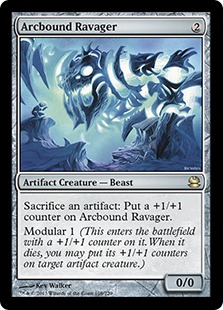 Affinity continues to be a mainstay within those of the Modern community that have put in the hours to reach high levels of skill with the deck. However, with the decline of Merfolk, Affinity lost one of its Tier 1 matchups in a similar way to the GBx decks. Unlike the GBx decks, Affinity continues to be a deck I would recommend if you have the reps in and have further tuned the sideboard with the inclusion of some number of Blood Moons and a way to fight through the Naya decks. My prediction is that the two types of Naya decks will be very popular at Grand Prix Pittsburgh and I do not think that is a good thing for Affinity pilots since Ancient Grudge will be everywhere. I still believe that a very experienced pilot with a solid maindeck and specialized sideboard could easily destroy countless players and reach the Top 8, but I still do not think Affinity is the deck to play if your goal is to win the tournament.
Affinity continues to be a mainstay within those of the Modern community that have put in the hours to reach high levels of skill with the deck. However, with the decline of Merfolk, Affinity lost one of its Tier 1 matchups in a similar way to the GBx decks. Unlike the GBx decks, Affinity continues to be a deck I would recommend if you have the reps in and have further tuned the sideboard with the inclusion of some number of Blood Moons and a way to fight through the Naya decks. My prediction is that the two types of Naya decks will be very popular at Grand Prix Pittsburgh and I do not think that is a good thing for Affinity pilots since Ancient Grudge will be everywhere. I still believe that a very experienced pilot with a solid maindeck and specialized sideboard could easily destroy countless players and reach the Top 8, but I still do not think Affinity is the deck to play if your goal is to win the tournament.
Next up is one of the decks that I think is a very strong deck that is worth considering for the Grand Prix: Amulet Bloom.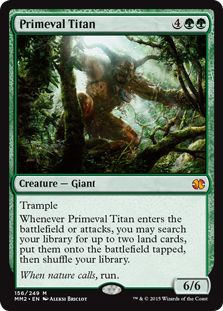 This deck has over-performed in most of the Modern tournaments where big name players have appeared with this deck in tow. One of the biggest reasons you see these fantastic players continually putting up results with this deck is that the skill ceiling for Bloom is insanely high. In addition, the deck’s combo aspect of closing out a game on turn two to three with moderate frequency is very tempting: free wins are very important in a 15 round event. I believe with some updated sideboard cards such as additional Seal of Primordiums, Bloom can fight through the higher than average Blood Moon count I expect in Pittsburgh. However, this increased number of Blood Moons is a real concern and even the most adept pilot is dead in the water to a Blood Moon without Seal in play, or a Forest on board to cast Seal. This is a deck that crumbles to Blood Moon and while I do not normally play decks with that kind of weakness, the ability to simply learn this deck and play a very unfair game in some amount of matches is very appealing to me for a long event.
This deck has over-performed in most of the Modern tournaments where big name players have appeared with this deck in tow. One of the biggest reasons you see these fantastic players continually putting up results with this deck is that the skill ceiling for Bloom is insanely high. In addition, the deck’s combo aspect of closing out a game on turn two to three with moderate frequency is very tempting: free wins are very important in a 15 round event. I believe with some updated sideboard cards such as additional Seal of Primordiums, Bloom can fight through the higher than average Blood Moon count I expect in Pittsburgh. However, this increased number of Blood Moons is a real concern and even the most adept pilot is dead in the water to a Blood Moon without Seal in play, or a Forest on board to cast Seal. This is a deck that crumbles to Blood Moon and while I do not normally play decks with that kind of weakness, the ability to simply learn this deck and play a very unfair game in some amount of matches is very appealing to me for a long event.
Next up is Splinter Twin. I am not sure why, but this deck continues to feel like a poor choice for open events. While one pilot tends to make Top 8 of most Modern Grand Prix, it still feels like a deck that is not favored versus skilled opponents with either Abrupt Decay or Path to Exile. Recent Twin lists tend to remove black and return to their UR roots, allowing for better mana and access to Blood Moon. I suspect if people continue playing GBx for the Grand Prix, despite the decks feeling much worse of late, I expect the Twin players in the room to struggle versus those decks as well as the Naya decks that can interact and apply massive pressure early. While Twin players can adapt their sideboard effectively to fight these decks, it still feels like an uphill battle that does not end in a solid payoff. For Grand Prix Pittsburgh I would not play UR Twin unless you have put in the hours to master the deck and even then, I do not think Twin is in a place to take down this tournament.
While one pilot tends to make Top 8 of most Modern Grand Prix, it still feels like a deck that is not favored versus skilled opponents with either Abrupt Decay or Path to Exile. Recent Twin lists tend to remove black and return to their UR roots, allowing for better mana and access to Blood Moon. I suspect if people continue playing GBx for the Grand Prix, despite the decks feeling much worse of late, I expect the Twin players in the room to struggle versus those decks as well as the Naya decks that can interact and apply massive pressure early. While Twin players can adapt their sideboard effectively to fight these decks, it still feels like an uphill battle that does not end in a solid payoff. For Grand Prix Pittsburgh I would not play UR Twin unless you have put in the hours to master the deck and even then, I do not think Twin is in a place to take down this tournament.
Having looked at many of the major decks in the format as well as the results for Grand Prix Porto Alegre, I think that assuming you are an expert pilot in the deck of your choice, the decks I would consider bringing are Amulet Bloom and Naya Zoo. These decks are very strong proactive decks that have free win elements and can rumble versus most of the format. However, I believe there is a tier of decks just below these two decks that are worth considering if you know the deck well and have a sideboard to fight these Blood Moonand combo decks. These decks include Affinity, Living End, GR Tron, Naya Burn, Four-Color Knight and Scapeshift. Just below this tier of decks are decks I would not recommend bringing regardless of individual skill with the deck. Decks within this tier include Infect, GBx decks, UR Twin, and Merfolk. These decks are not up to the task of winning the Grand Prix in my eyes and while I still have plenty of testing to do for the Grand Prix, I do not think any deck from this tier will be a serious contender to take down the Grand Prix.
These decks are very strong proactive decks that have free win elements and can rumble versus most of the format. However, I believe there is a tier of decks just below these two decks that are worth considering if you know the deck well and have a sideboard to fight these Blood Moonand combo decks. These decks include Affinity, Living End, GR Tron, Naya Burn, Four-Color Knight and Scapeshift. Just below this tier of decks are decks I would not recommend bringing regardless of individual skill with the deck. Decks within this tier include Infect, GBx decks, UR Twin, and Merfolk. These decks are not up to the task of winning the Grand Prix in my eyes and while I still have plenty of testing to do for the Grand Prix, I do not think any deck from this tier will be a serious contender to take down the Grand Prix.
One of the big challenges of predicting the meta for an open field event in Modern specifically compared to some other formats is that there is an element of comfort that players rate very highly in Modern specifically. For Grand Prix Richmond, one of the phrases repeated over again was “Play what you know,” but I think this is a very dangerous phrase for bigger tournaments. With a few weeks between the Grand Prix, do not be afraid to learn these newer decks or learn a deck that is poised to do well. Put that well-loved and studied deck on the shelf and explore your options while you still can and if you still believe old faithful is the right deck to bring, at least you have gained something from these few weeks in experience. Moreover, the more decks you know inside and out, the better you will play against them in the tournament.


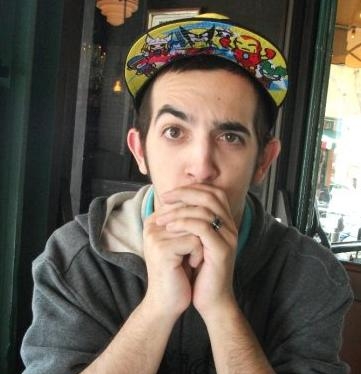



Amulet bloom also has acess to chromatic lantern and natures claim for the bloodmoon matches . if you are gonna test this deck also test sigarda host of herons too in that she is extremely powerful in the bg matches! The hardest part of playing with amulet bloom is remembering all of your pact upkeep triggers so you dont give your opponent free wins.
I have been playing this deck for a year or two and i love how powerful it is . the tutoring system you get with tolaria west is op .
Enjoyed the article, excited to play at the GP (mono red Ulamog aggro). One note, I think you dropped the ‘e’ in “remove” in the paragraph re: Splinter Twin [“Recent Twin lists tend to remov black and return to their UR roots, allowing for better mana and access to Blood Moon.”]
That is an embarrassing oversight that has been fixed with extreme prejudice.
I think gbx is excellent position if the format is shifting to creature based aggro and twin which I feel it is. My advice is play finks main, pack 3-4 sweepers in the side, don’t forget your leylines and dust off those fulminators.
I’m trying to determine why I disagree with this article, maybe it’s because I’m invested in BGx and Twin as the de facto ‘best decks’ in Modern.
I just don’t think you can ignore those two. BGx can run Thragtusk, Kitchen Finks and especially in Abzan’s case – Siege Rhino and Timely Reinforcements. That along with the chump block potential of Lingering Souls means I think Abzan is probably well positioned against an expected aggro meta.
(Although conventional wisdom is that Blackcleave Cliffs puts the advantage in favour of Jund)
If you do think that the meta will be hyper-aggressive – then perhaps Grishoalbrand should be considered in the same vein as Amulet Bloom. Shoal pitching Wurm can be back breaking.
UR Twin will always be a contender – especially with it’s relatively pain-free manabase. I wouldn’t be writing the deck off just yet.
I do agree that Naya will be heavily represented, and adding blue and giving it the ability to combo kill increases the viability of the deck. But despite what Wizards believes, Modern players will adjust sideboards to fight the meta shift.
Amulet is always the anwser.
42 amulets.
I think that only looking for the top8 lists is a mistake.
GP Porto Alegre featured 2 Jund decks in the top16 (me included), and I think the deck is ver well positioned. I lost to Caio, and the match felt horrible, but with some changes in the sideboard (damnation comes to mind), the matchup actually seems favorable if well played.
I know that modern has a lot of good decks, but we can not disconsider T1 Discard spell, T2 Bob/Goyf, T3 Liliana…
Nonetheless, great read.
When it comes to the small naya zoo list you mention under the heading alternatively, that is a Nacatl Burn list which was popularised by Pascal Maynard (see first link), not Patrick Sullivan. Sullivan, along with myself and most of the salvation burn forum, strongly disagree with the cat being used in Burn at all.
The small zoo list that Patrick Sullivan is pushing plays Kird Apes and Mutagenic Growths in place of Lava Spikes and Rift Bolts causing the deck to behave very differently to burn and more like RDW (see second link).
Finally, I think that the RWg version of Burn is well positioned in the meta (4 Skullcracks instead of Atarka’s Command) for GP Pittsburgh as it lines up better against the aggressive decks that are being played at the moment. It takes less damage to play (includes a little lifegain (deflecting/helix/kor)), still quick enough to put up consistent turn 4 wins, and has the flexibility of switching to a control role in a faster paced meta which some of those decks don’t have the ability to do.
[1] http://www.channelfireball.com/videos/channel-pmayne-modern-naya-burn/
[2] https://twitter.com/BasicMountain/status/634959298016227328
“Twin is in the top 8 of every tournament, but it just feels bad y’know.”
Does nobody else see the absurdity in this statement?